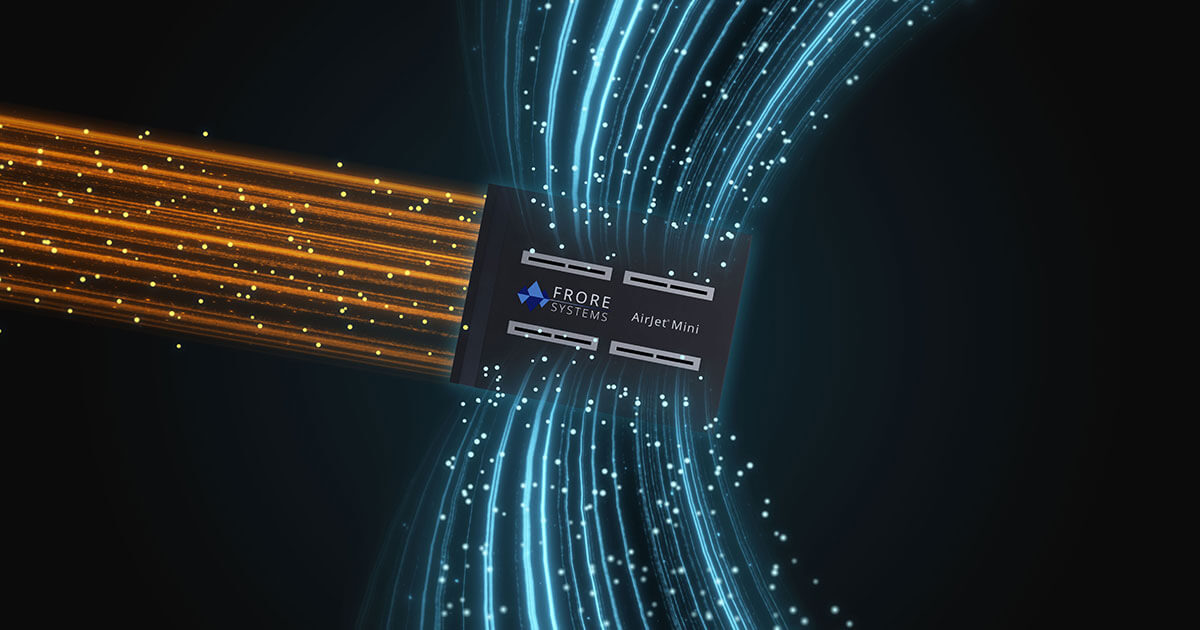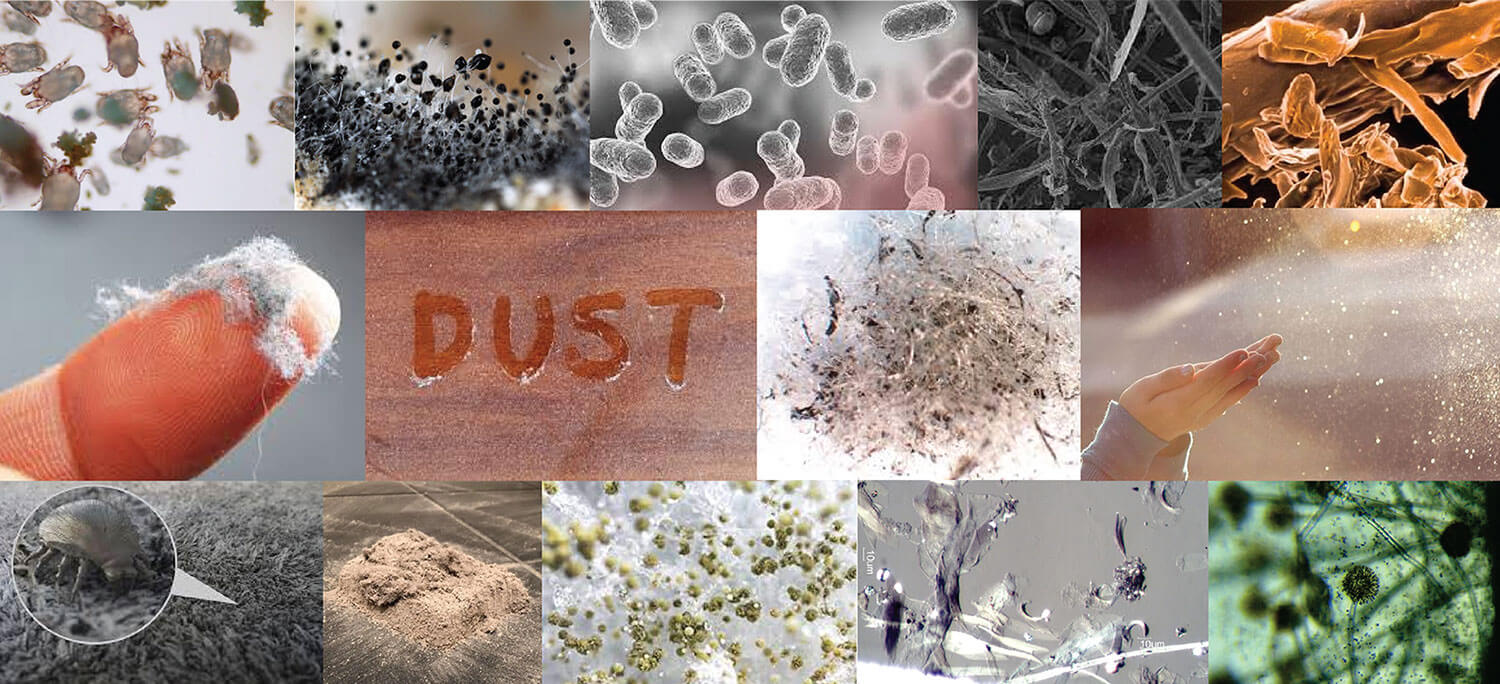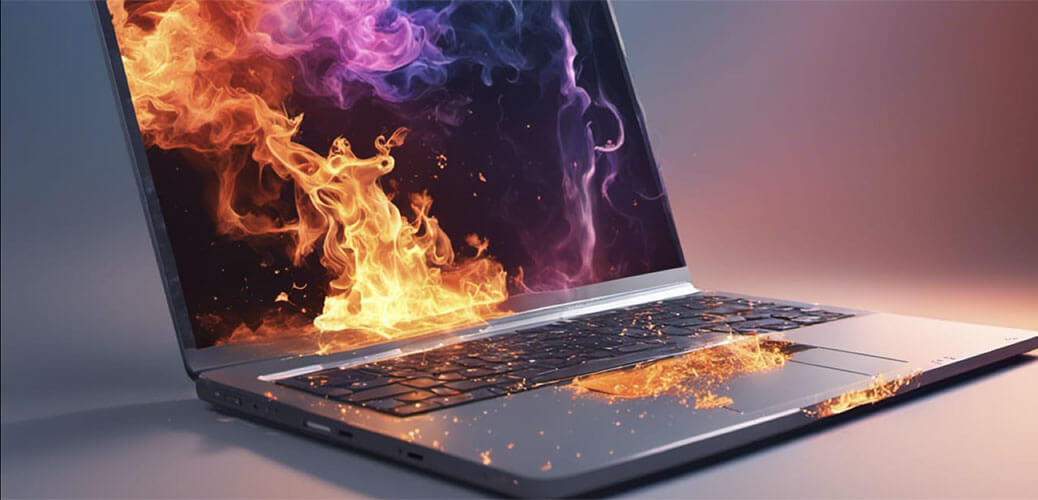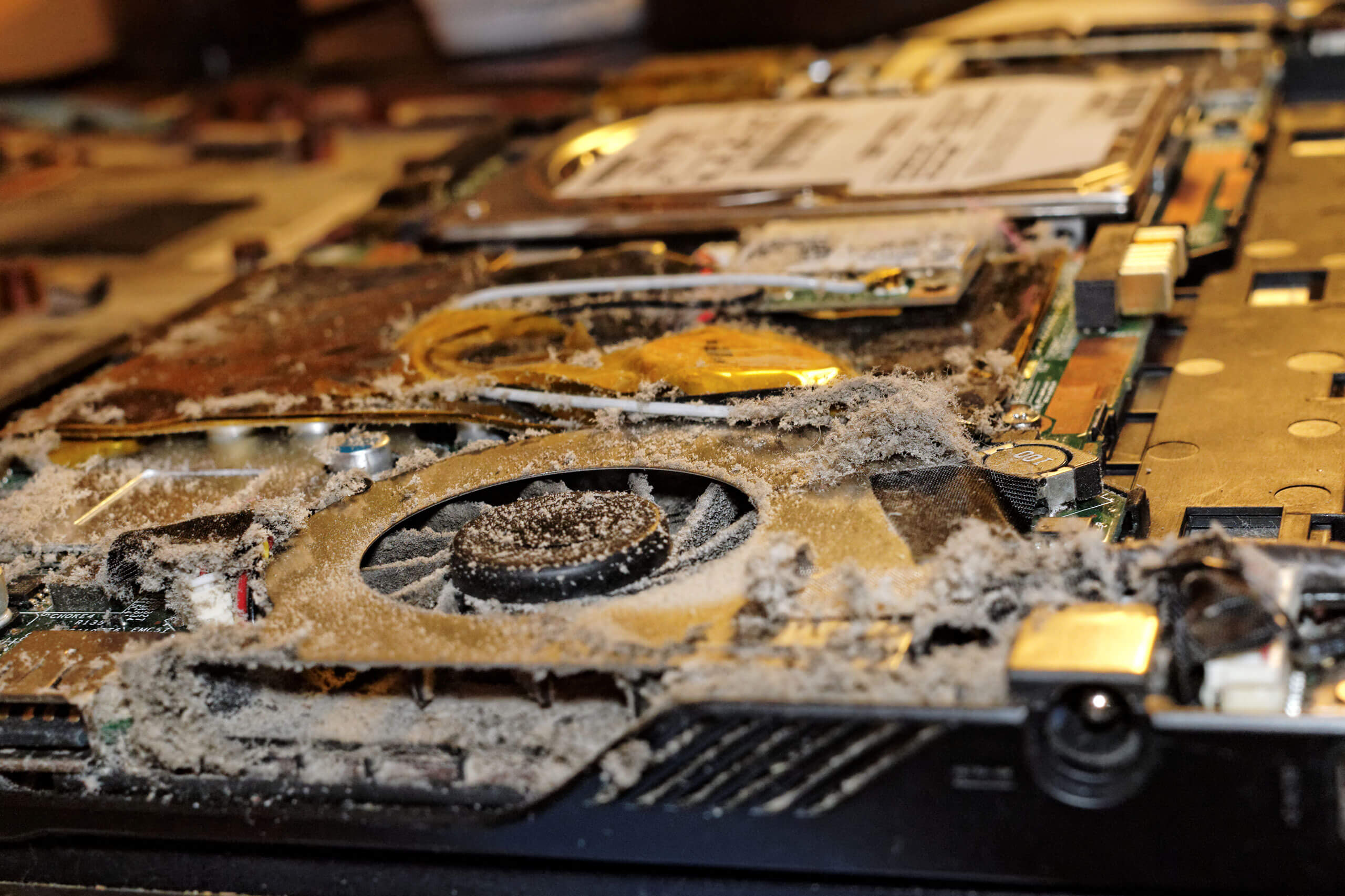
In our last blog we talked about the limitations of Active Cooling. Dust is a big one - “Fan based active cooling systems require open inlet vents that result in dust being dragged into the device wreaking havoc.” Fans require high air flow to cool devices and more air flowing in inevitably means more dust.
To avoid the havoc caused by dust you need to clean your fan every few weeks… That’s the advice from experts to keep your computer working properly and prevent serious damage from overheating. According to the Readers Digest “you only need to do it once or twice a month, depending on the age of your laptop—the older it is, the more dust it accumulates and the more upkeep it requires.” According to Lenovo, every 3 to 6 months is enough, but they conclude that “If you neglect cleaning the laptop fan, dust and dirt can build up, blocking the airflow. This will cause the fan to work harder and less efficiently, leading to overheating and potential damage to the internal components like the processor or graphics card.”
Here’s the list of items you’ll need to clean your laptop fan: 1 razor blade, lubricant oil, blow cleaner, scissors, paper towel, tape to hold it back together (yep tape!) and a lot of courage to perform the deconstruction, cleaning, and reconstruction. Here’s a how-to video if you’re feeling brave:
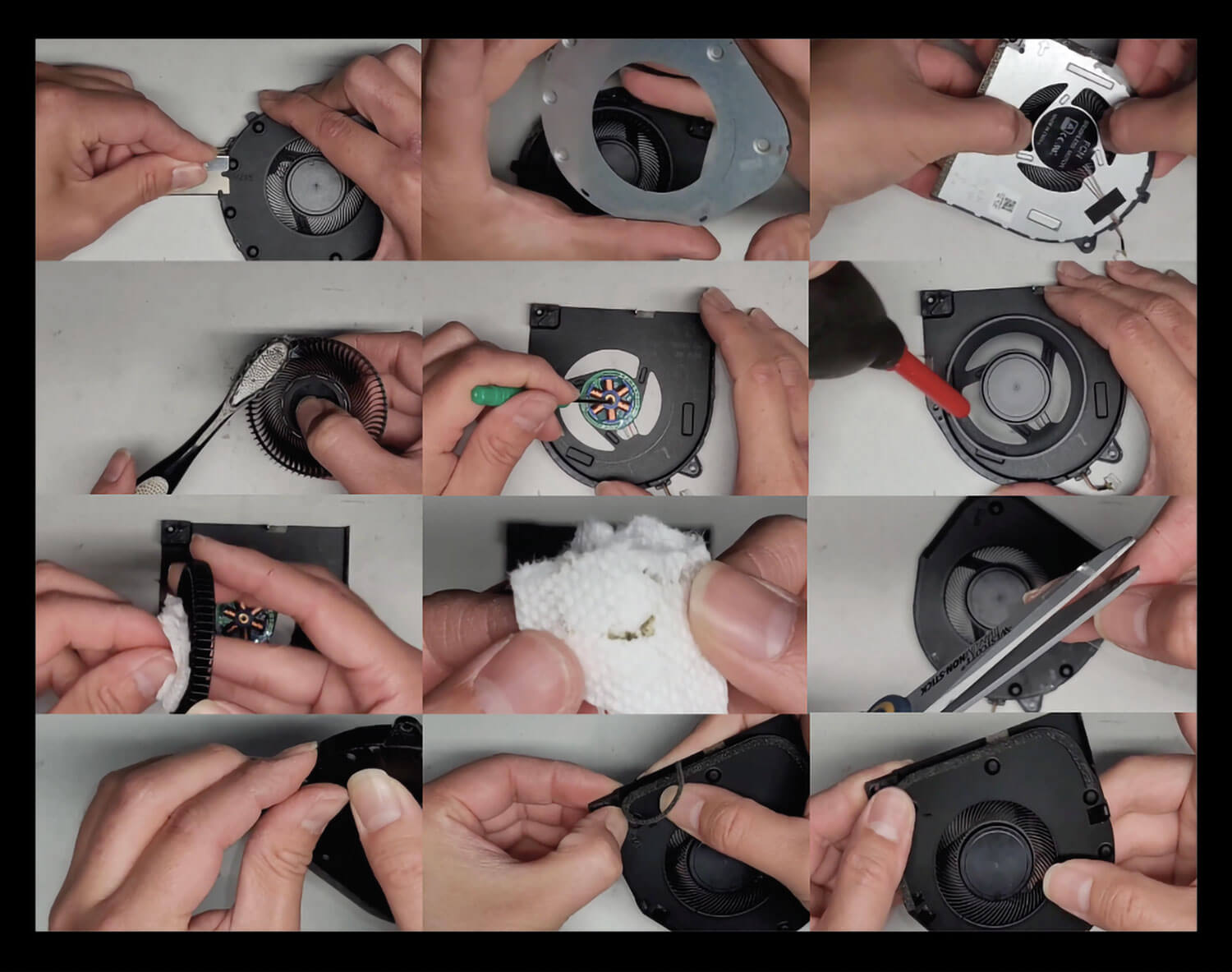
If you want to know exactly how hard it is to open up your laptop for repairs, IFIXIT has a “Repairability Score” for a range of laptops ranging from 1 (really hard) for MacBooks, through to a 10 (easy) for some HP laptops – although we suspect ‘easy’ is relative and the raters at IFIXIT may find things easier that the average consumer. You can find their ratings here.
For those laptop users who are not comfortable tearing their computer apart for a deep clean every few months, you might want to keep an eye out for the first dustproof AirJet enabled laptops that will be coming to market in the next 12 months.
If you’re curious about the implications of not regularly cleaning your fan (teaser: overheating, laptop failure, data loss, reduced performance, component damage, etc.) and why AirJet enables you to kick dust to the curb…. Read on….
Computer fans need a lot of air to cool the heat generated by modern processors. But fans don’t have a lot of back pressure (or suction) to pull air though the tight spaces of a laptop. This means, manufacturers need to punch lots of air vent holes in the device skin, situated very close to the fan, to ensure it gets easy access to air. Close to the fan generally means air vents across the back cover of the laptop (ironically, these vents are completely blocked off as soon as you place the laptop on… well your “lap” for example, chocking the air flow.).
Fans need as much air flow as they can get, because traditional fans blowing air across heat sinks are notoriously inefficient at heat removal. A universal condition called the Boundary layer (read more here), means air slows significantly the closer it gets to another surface. This condition leads to a low heat transfer rate from the hot fin stack to the air being blown through it by the fan.
The first side effect of this is that fans must draw a lot of air into a laptop and move it across the fin stack (or heat sink) inside the laptop to achieve adequate heat removal.
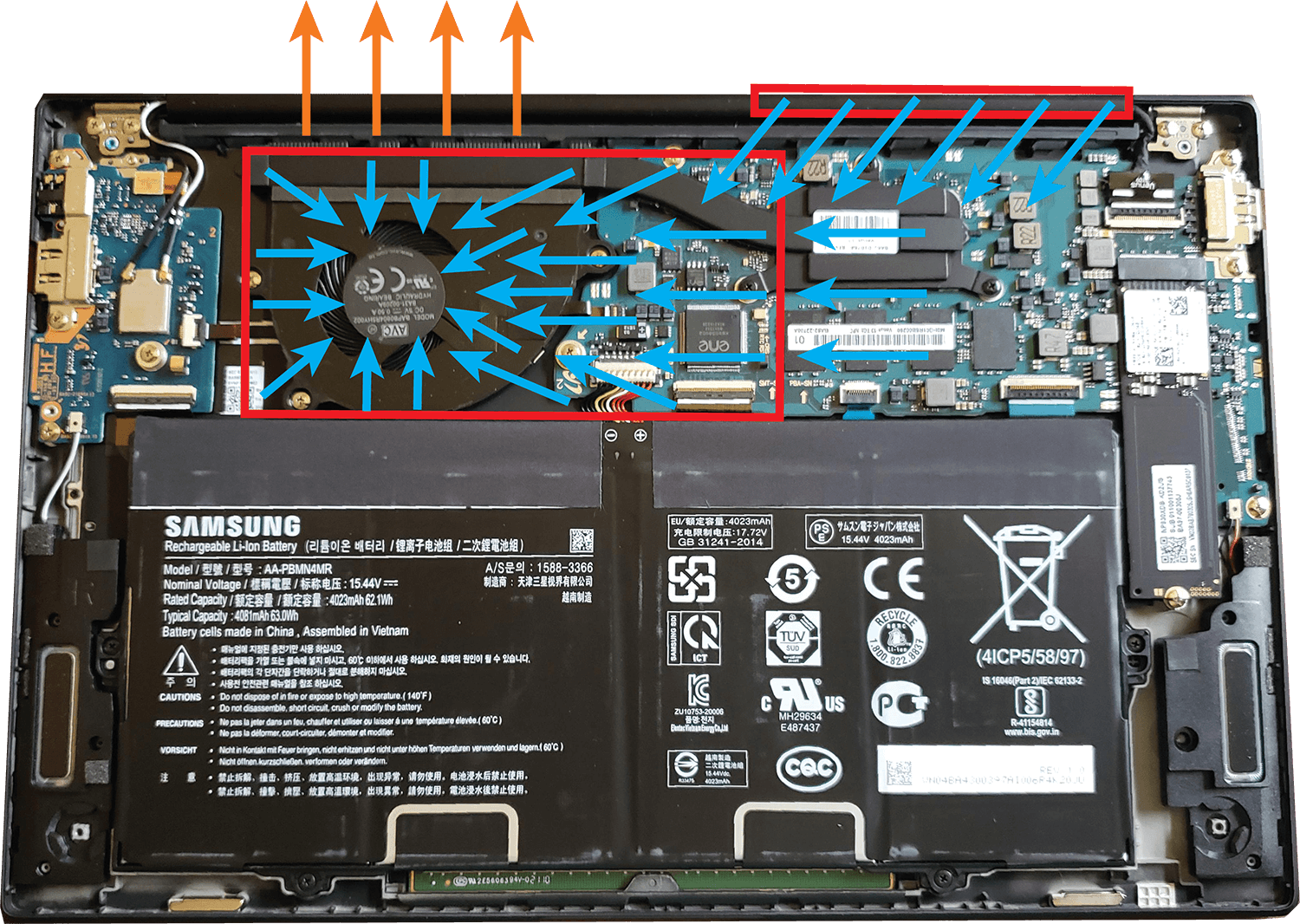
The second is that the large volume of air needed by the fans, coming in through all those air vents, carries equally large volumes of dust – which inevitably gets caught inside the laptop.
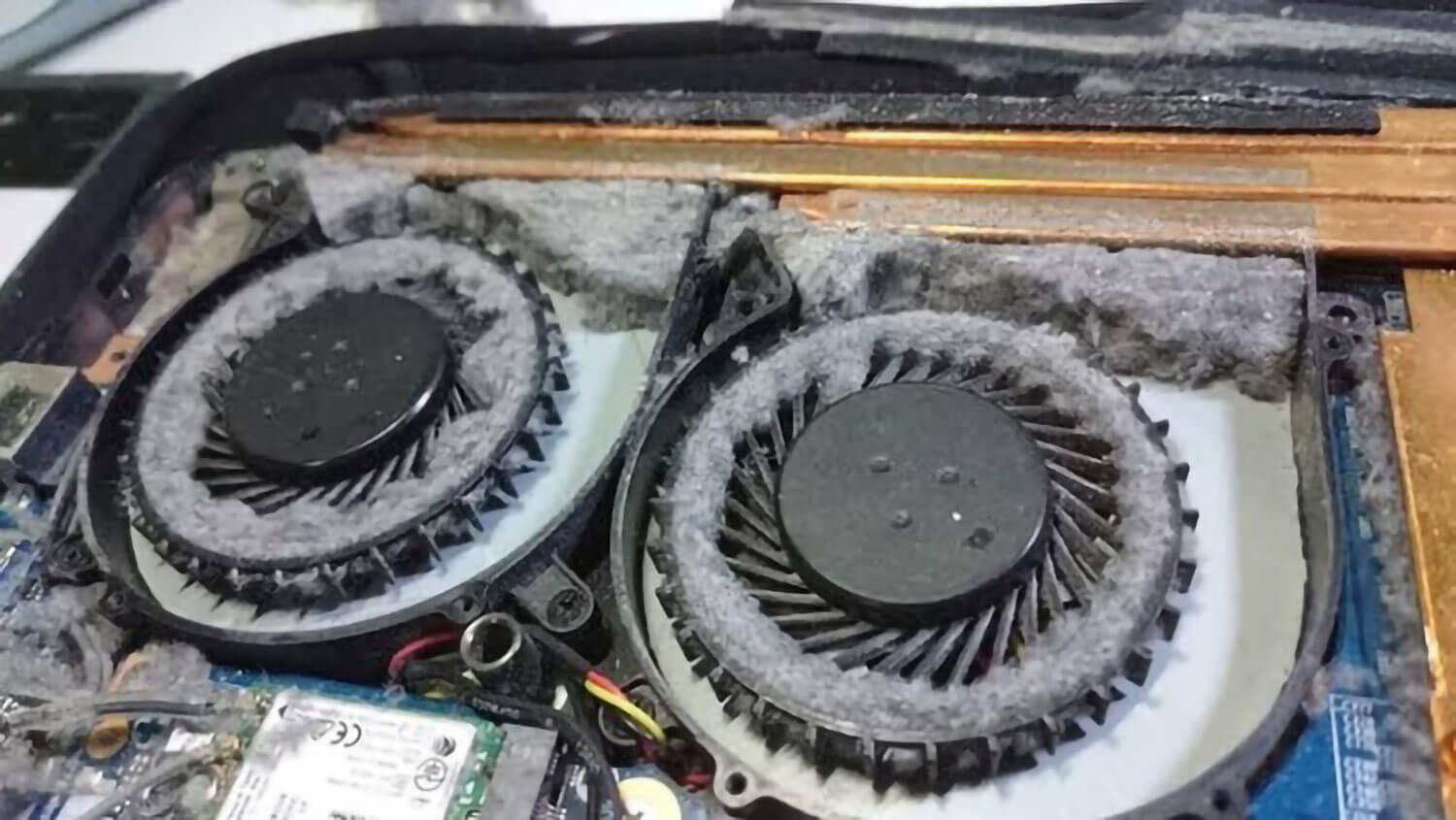
If the flow of air in the laptop is blocked by dust build up in the fan, it will fail to operate as intended and the laptop will inevitably overheat, slowing it down and causing electrical and mechanical failures.
But it gets worse.... Once a fin stack is clogged up with dust, no air can flow through making it worthless for cooling. A sign of this happening is the computer becomes much louder. The fan will run longer and has to spin faster and faster to perform normal duties, creating even more irritating fan noise. So if the fin stack becomes blocked by dust, you have twice the problem, causing your laptop to overheat even faster, slowing it down and causing electrical and mechanical failures even sooner.
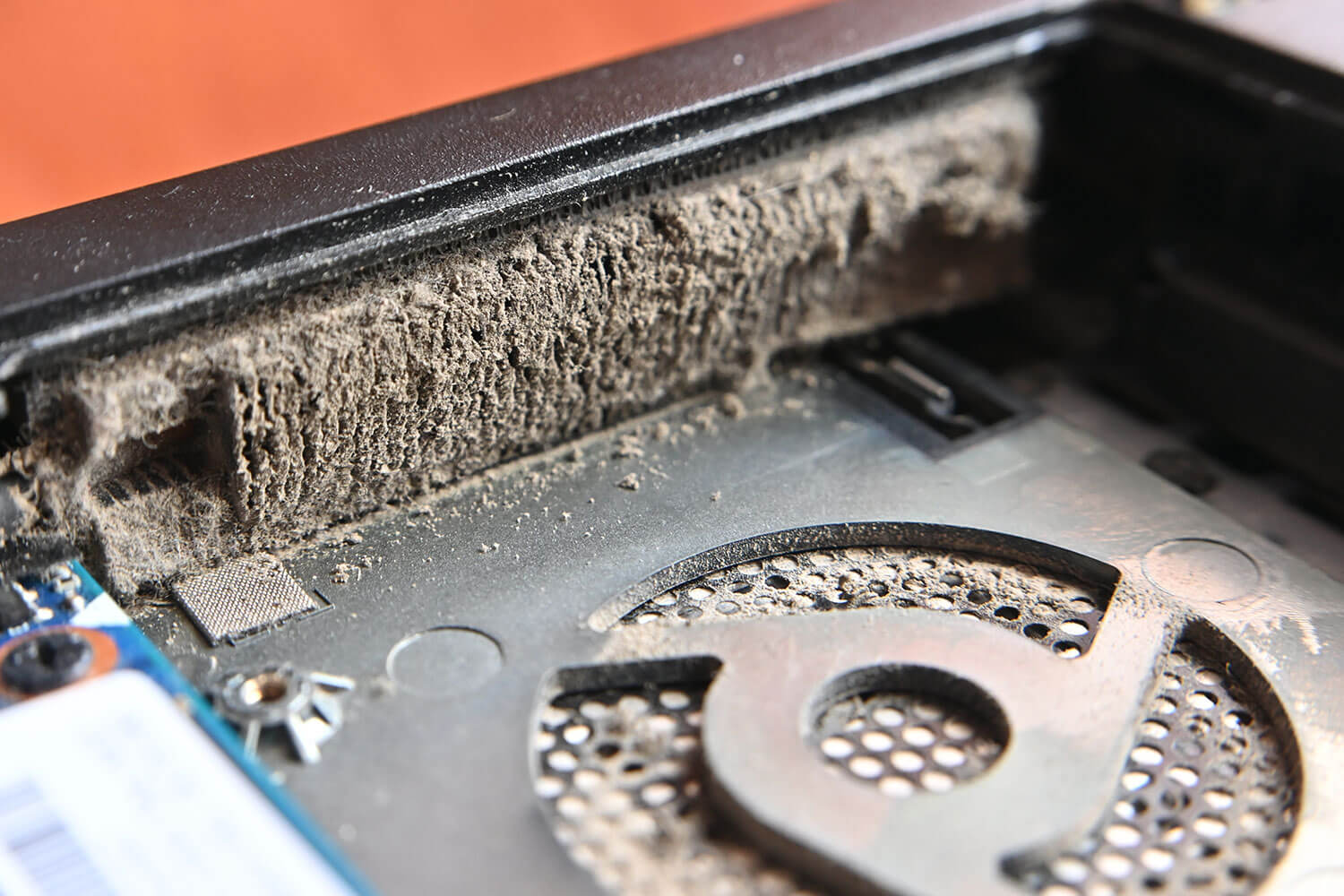
Devices cooled with AirJet have number of major advantages when it comes to dust.
- AirJet has a massive backpressure – more than 10 times that of a laptop fan. This means it can suck in air though tiny spaces on the sides of the device, meaning it can access air flow anywhere the laptop is being used, whether the device is on a desk, your pillow or on your lap.
- AirJet is highly efficient at heat removal. Using an approach call Jet impingement, the AirJet doesn’t simply blow air across a heat sink. AirJet sends vertical jets of rapidly pulsating air to impact the copper heat transfer plate integrated into the tiny 2.5mm thick AirJet chip. These jets of air destroy the ‘Boundary Layer’ that exists on the surface limiting the transfer of heat, and enables the air pulled into the AirJet to be completely saturated with heat, before being immediately ejected completely out of the device. This means you can remove more heat than a fan with less air flow.
- AirJet’s massive backpressure enables manufacturers to install additional dustproof filters on the device casing itself, protecting the entire device from dust.
FAN THERMAL SYSTEM:
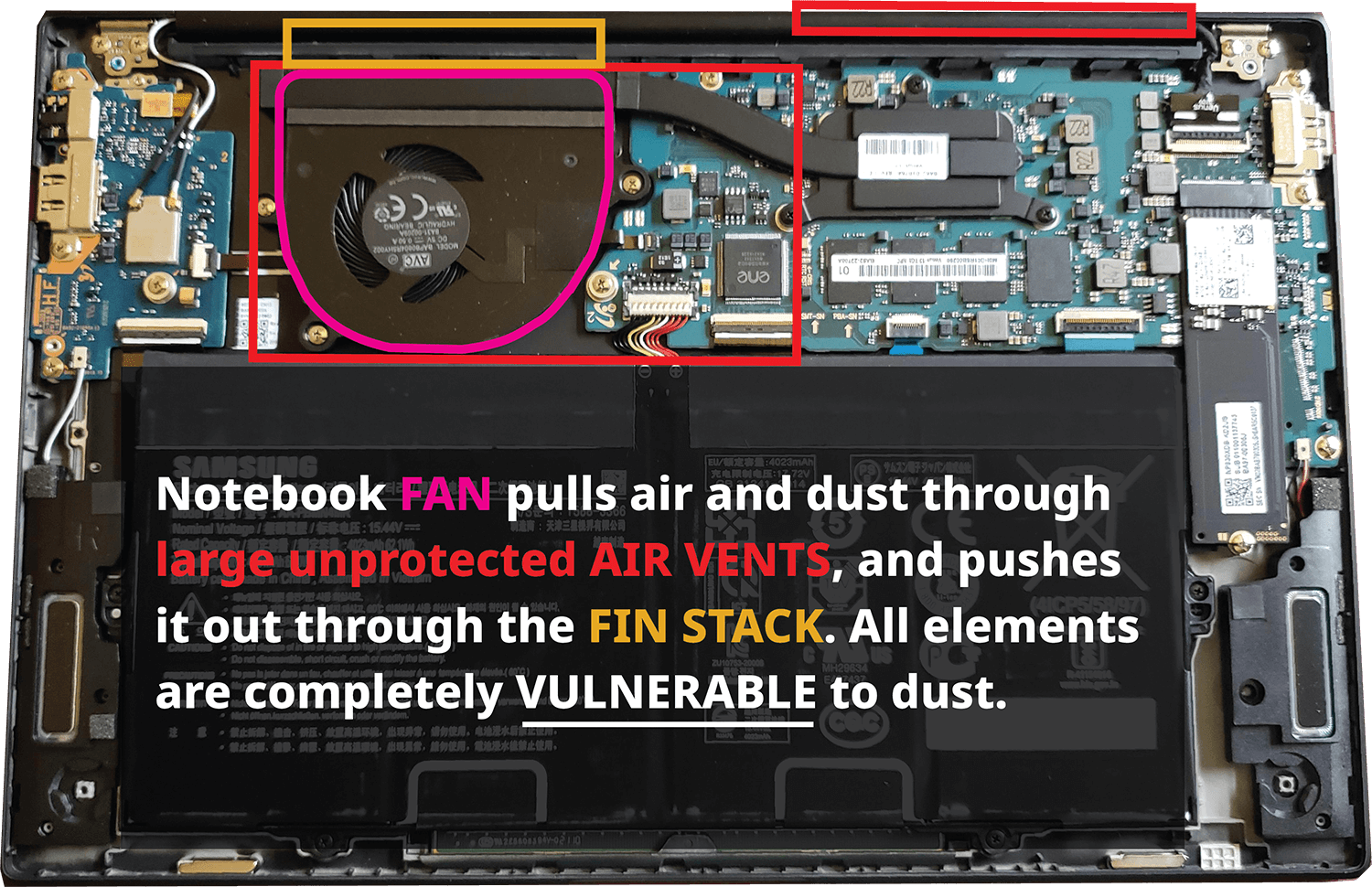
AIRJET THERMAL SOLUTION:
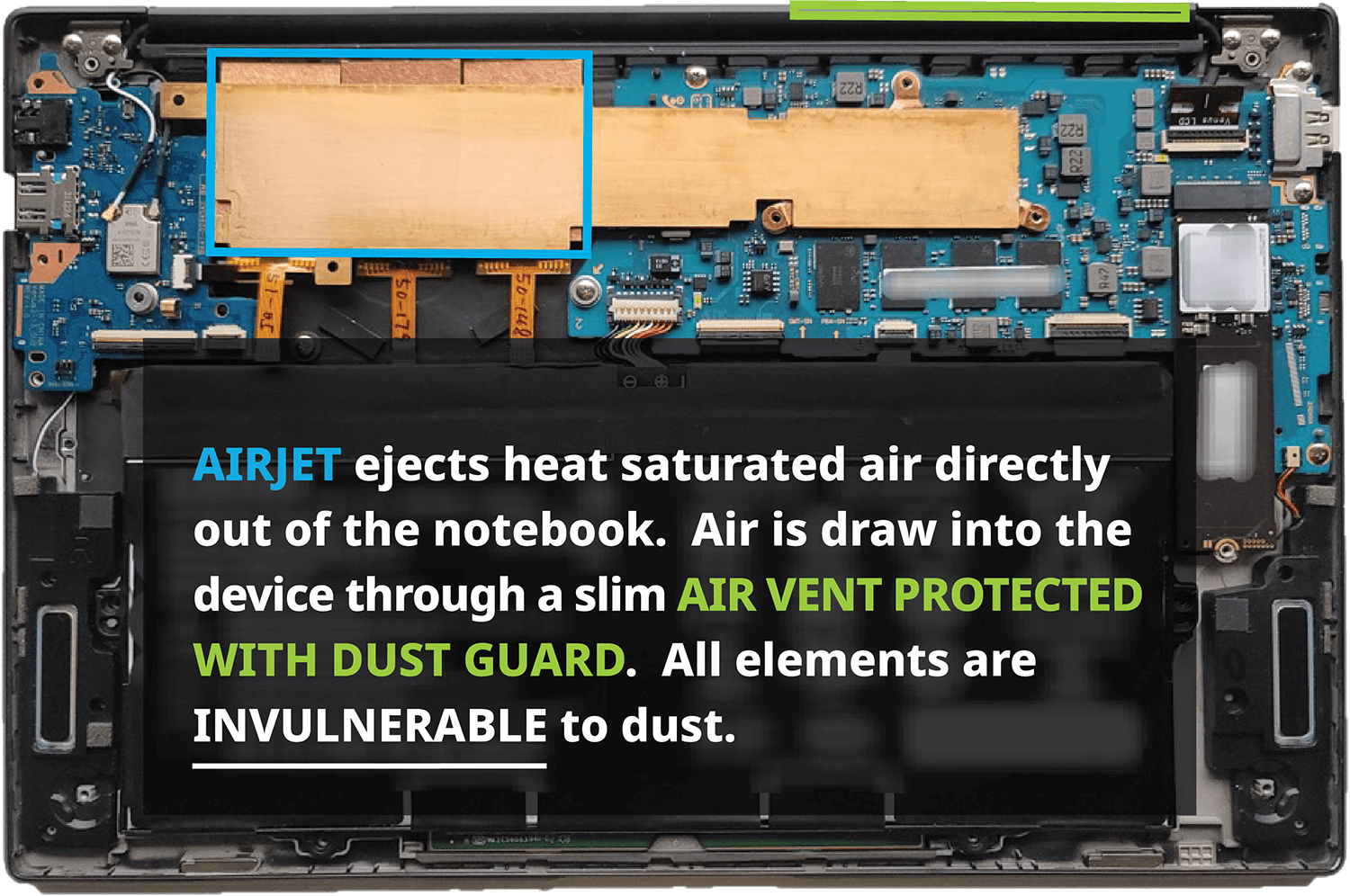
But that’s not all.
AirJet also enables significantly increased performance.
Not only does AirJet protect your laptop from dust related damage, it does this while significantly increasing your laptop’s performance.
AirJet’s innovative ability to remove heat at such high levels, means today’s high performing processors, now have the cooling which enables their processors to perform as advertised.
Most people are unaware the performance of their device is ‘throttled’, or decreased, by the device operating system as soon as the processors start to get hot. That can be within 10 seconds of starting up.
Processor throttling due to inadequate heat dissipation.
The image below shows how quickly the performance of the off the shelf MacBook Air (highlighted in orange) throttles due to heat. The MacBook Air upgraded with AirJet (highlighted in blue) delivers sustained full M2 processor performance.
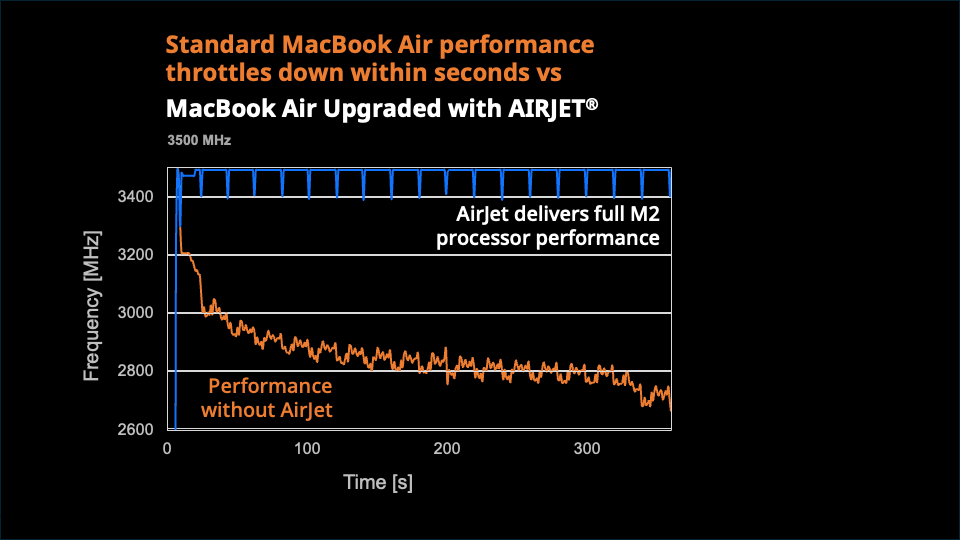
AirJet enables devices to keep their cool. Maintaining the sustained performance you expect, and enabling users to do more with their devices, much more.
Frore Systems recently upgraded a Samsung Galaxy Book2 Pro with 3 AirJet chips. In addition to protecting the entire systems from dust, AirJet achieved a 33% increase in CPU performance, with silent operation and 33% reduction in the area taken up by the thermal solution creating increased space for a bigger battery.

Similarly, when installed in a MacBook Air, AirJet enables the same performance as a MacBook Pro, but without the addition of noisy, dust collecting fans.
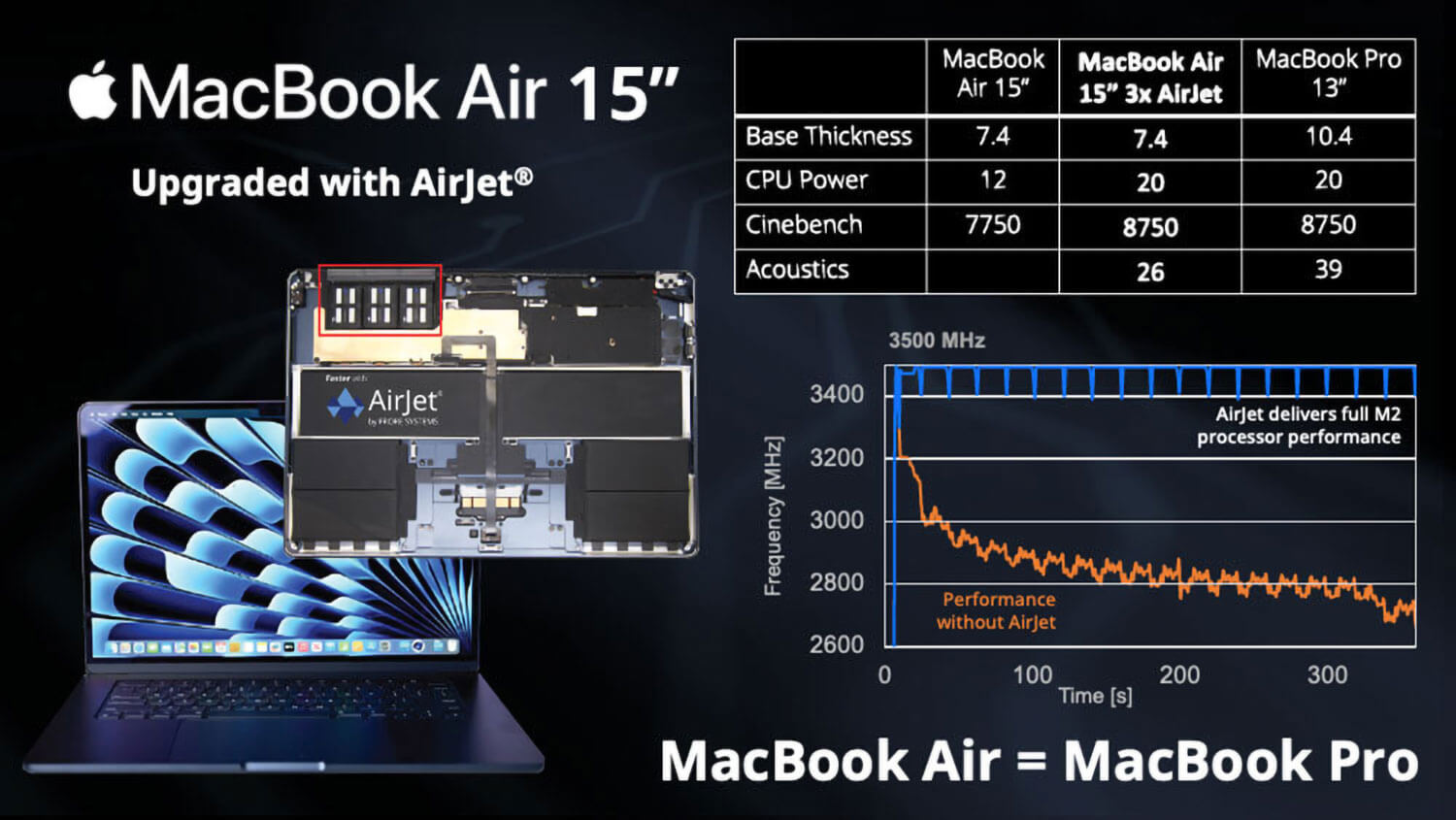
Airjet, increasing performance and defeating dust, is the future of device cooling. AirJet’s compact size and scalable nature means manufacturers can achieve enhanced heat removal for increased performance in a wide range of faster, thinner, lighter, silent, and dustproof devices. AirJet can enhance performance across numerous devices from Notebooks, Mini-PCs, tablets, smartphones, and SSDs to the approaching tsunami of IOT devices; DSLR cameras, 5G WiFi hot spots and LED lighting, and in markets as diverse as the datacenter and automotive industries.




